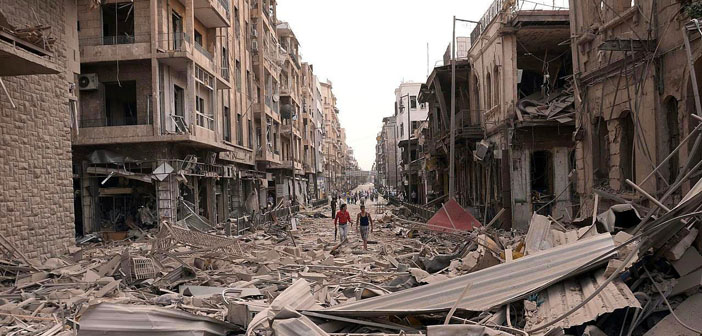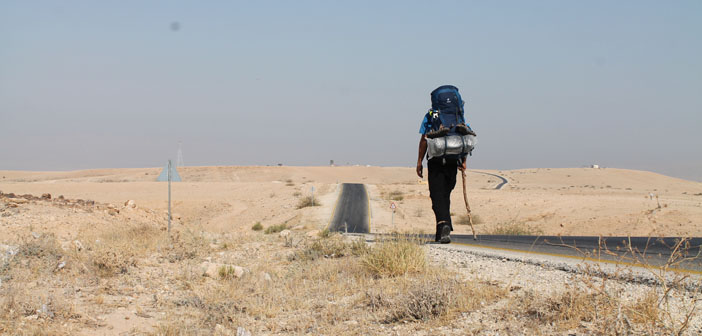Syrian peace negotiations that started in Geneva remains on the agenda of Turkey and the world; it is wondered whether those negotiations will bring any solution. Recently, the meetings are suspended until February 25. Agos columnist Vicken Cheterian, who closely watches the developments, pictures the current condition of the process.
(GENEVA) In spite all the madness and suffering in Syria, there is a new chance for diplomacy in Geneva. Don’t take me for a naive optimist; I rarely think diplomacy has the power to stop a raging war. Nor was I optimist two years back when Geneva II took place.
Back in January 2014 when the last international conference took place in Geneva followed by negotiations in Montreux known as “Geneva II” I did not think there was the least chance for a breakthrough. At the time I thought that all the factors that had gathered in Geneva were too feeble did not to stop the carnage.
First, the Syrian regime did not want a solution to end the war. The Syrian regime is very skilful when it comes to manoeuvre in international politics. It understands the balance of forces, how to avoid being targeted, and plays for time. Yet, the same regime has continuously refused to use any of its diplomatic skills internally, with those forces opposing him from his own people, from his own country. The Syrian opposition itself did not have much chance either: the political leaders were living in exile and they did not have any political capital among the fighting groups. Any concession they could have made – and concessions are part of any diplomatic negotiations – was to be branded as “treason” by the youth fighting on the ground. It was also a time when fighting groups were being radicalized, ISIS and Nusra becoming more and more popular. The only hope for the opposition leaders was a foreign intervention, although in 2014 this foreign intervention had become a factor spreading the conflict, not containing it. Nor did the international sponsors of Geneva II – Washington and Moscow – reveal much enthusiasm, or a common strategy to take Syria out of the cycle of violence.
In 2014 the central problem in Syria was whether Asad should stay or should he go. In 2016 this is no more a central issue. Asad is not a central figure in the Syrian tragedy today, only one factor among many others. Asad’s strategy to supress the popular rebellion in 2011 was to isolate it from international support, to drag the conflict into an armed confrontation between the superior regime forces and Islamist rebels. The regime largely succeeded in its strategy, but failed to win the fight. Today Asad lacks the human resources to bring Syria back to its dictatorship; the Syrian Army effectives are one-third of the Syrian army of the past, dropped from 350’000 to 125’000. The regime survives largely due to the division of its opponents, and massive support from Iran and Russia.
Things have also changed within the opposition camp. First, political leaders and field commanders came together in Riyadh and put forward a common delegation. The contradiction between negotiator and fighter so evident in Geneva II has been bridged. More important, the Syrian opposition and rebel forces have no illusion today about their chances of having a victorious entry to Damascus: they are divided, dependent on foreign funding and supplies, and apart from the regime and its foreign allies are challenged by ISIS in the east and al-Qaeda related Nusra in the West. The best hope of the opposition is to stop the daily bleeding of the Syrian people, relieving the towns that are under siege, and start a political process.
Outside military interventions also revealed their limits. Turkey, which provided massive support to Islamist fighting groups, has reached a dead-end: its demands that “Asad must go” failed to take shape. Its second objective to create a “no-fly zone” in northern Syria in other words a zone of direct Turkish presence also failed. In 2014 European powers behaved as if Syria was a foreign policy problem. In 2015 the Syria problem invaded their internal sphere, posing major challanges: the double ISIS attacks in Paris finally revealed the inevitable, that violence in the Middle East cannot be contained outside the walls of “fortress Europe”. The massive wave of desperate refugees also revealed the limits of universal values of Europe, where even a sympathetic German chancellor could not keep its solidarity for long. Even the Russian leadership, which looks momentarily to have marked some successes on the ground, knows the limits of the game: the efficiency of its air power could be quickly limited by providing anti-air missiles to the rebels, just like the massive attack of the Syrian Army in autumn 2015 was contained by providing the rebels with thousands of TOW anti-tank missiles.
Even ISIS, which emerged suddenly in 2014, has reached its limits. After spectacular victories it is accumulating defeat: Kobani, Tell Abyad, Sinjar, and Ramadi. ISIS can still celebrate violence by crucifying prisoners in the main square of Raqqa, but it is doubtful that the jihadi group can shift the balance of forces on the ground. By picking up too many fights with many local and international forces its chances of establishing a desert emirate is largely compromised.
In 2014 the multiple local and international sides in the Syria conflict were convinced that time played in their favour. They were convinced that they could achieve victory. Today the military logic has revealed its limits; today, the conflict in Syria is hurting everyone. The sides that have come to Geneva can still choose to go on fighting. Or may be they will finally choose to talk and seek compromise.





